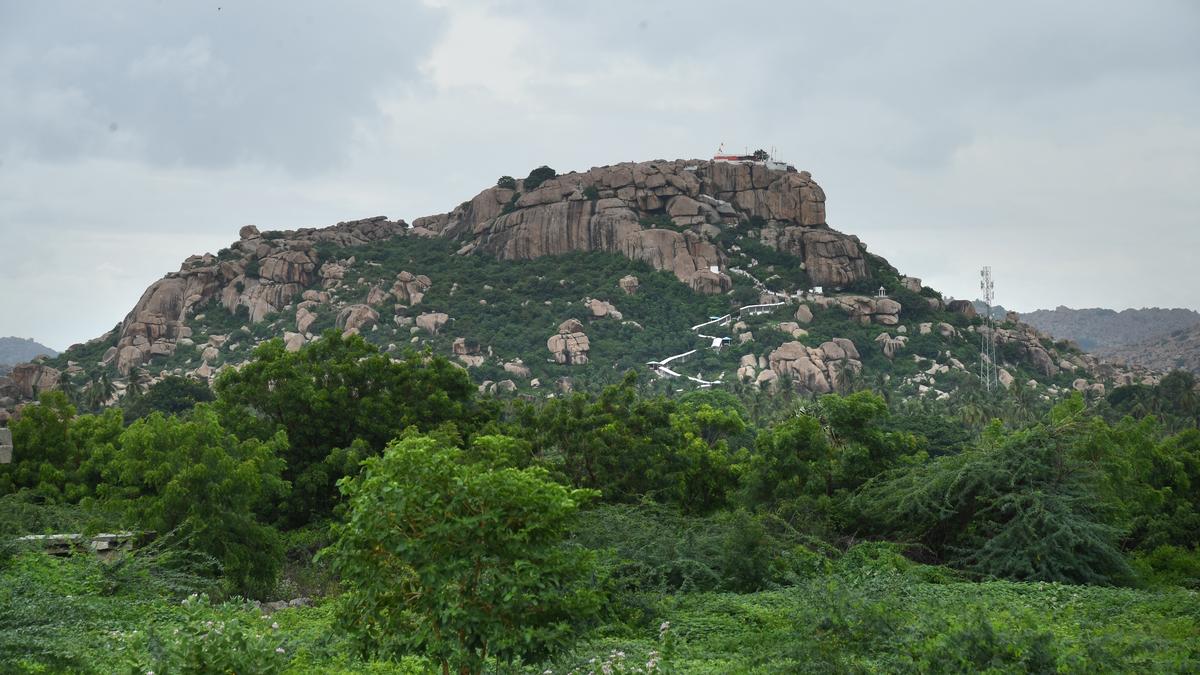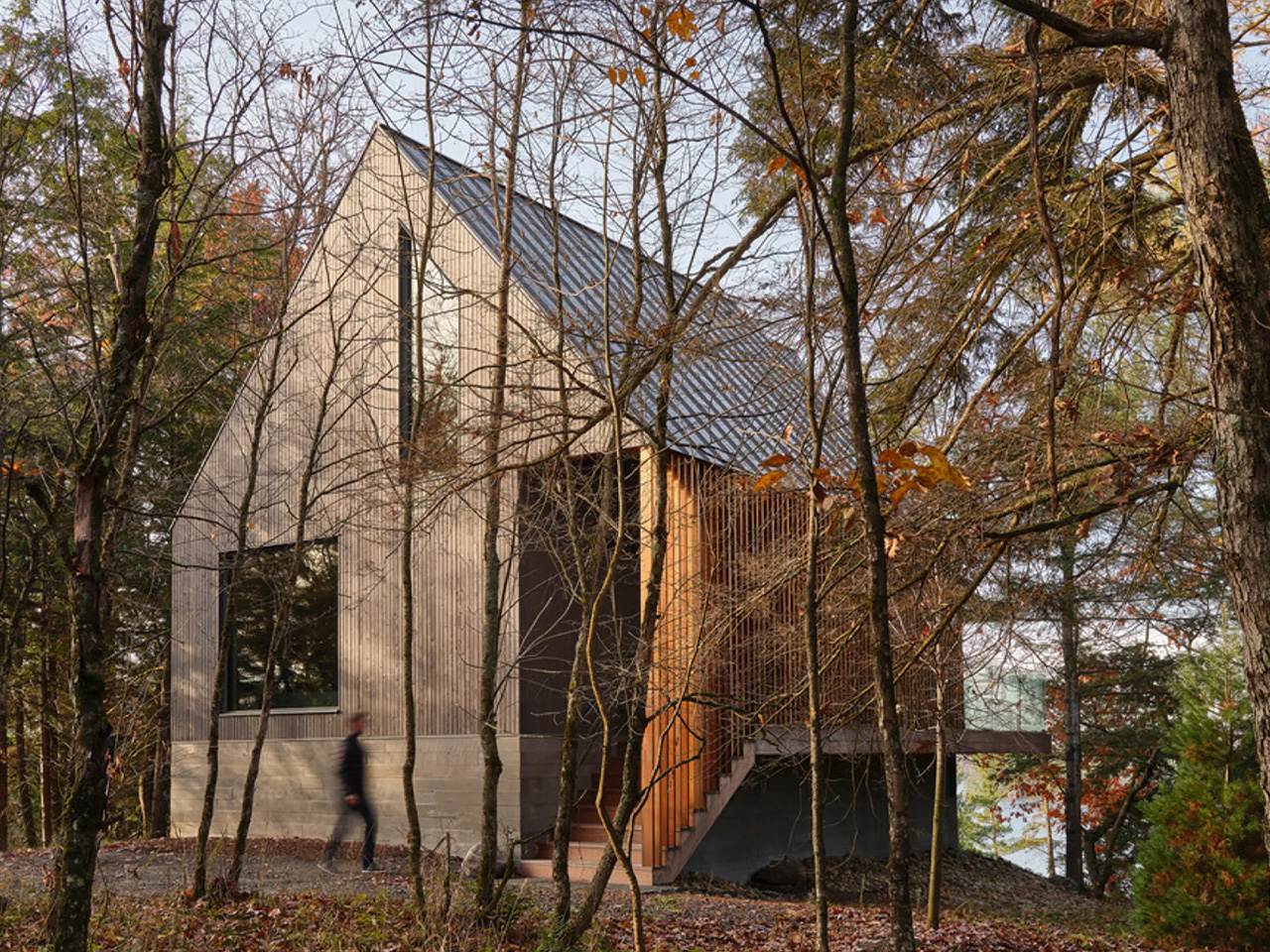It is 6 a.m. and Anjanadri Betta is stirring to life.
Vendors open shops, invite devotees to buy fruits, flowers, and garlands to adorn the temple idol at the top of the hill. Wearing saffron robes, hundreds of barefoot devotees slowly begin climbing the narrow steps, unmindful of the cold and strong breeze. Atop the hill, in the sanctum sanctorum, a priest performs aarati and chants mantras to the presiding deity Hanuman, as sandalwood incense sticks spread fragrance and oil lamps glow bright.

The Hanuman temple.| Photo Credit:K BHAGYA PRAKASH Serene scene This is the early morning scene at Anjanadri Betta (hill). There is no hustle-bustle at the foot of the hill or at the top, but the flow of people is unrelenting and prayers continue all day till closing time at 8 p.
m.. Devotees from different parts of India line up for darshan of Hanuman and his mother Anjana Devi in the same temple.
With the increased flow of pilgrims and law and order issues in 2018, The Hindu Religious and Charitable Endowments Department of the Karnataka government took over the administration of the temple in 2018. Top of Anjanadri Hills near Anegundi at Gangavati Taluk in Koppal district of Karnataka.| Photo Credit:K BHAGYA PRAKASH Chanting “Jai Hanuman” and “Jai Shri Ram”, devotees trek close to 600 steps to reach the temple site.
Handrails are provided at some locations for climbing steps without much difficulty. Steps up to the temple are for most part easy and at some places shade has been provided for some respite from the sun on hot days. Aged persons would find it difficult at a couple of locations, but it is not too hard a climb for others.
Close to the hill, there is an overhanging rock, and one has to bend very low to go under it and move to the next step. There are plenty of monkeys running around on the way. The Anjanadri Betta/temple is located on the banks of the Tungabhadra River in Koppal district in north Karnataka, about 350 km from Bengaluru.
The hill is believed to be the mythical birthplace of Lord Hanuman. Anjanadri Betta is one of the seven hillocks around the region and they are believed to be connected with the epic Ramayana. At a distance of four km from the temple, Anegundi, a small hamlet, is also called Kishkinda and this name finds a reference in Valmiki’s Ramayana.
The name of Kishkinda is also found in inscriptions belonging to 11th century, said Dr. S.Y.
Somashekar, Professor, Department of Ancient History and Archaeology, Kannada University, Hampi. The Anjanadri Betta offers a stunning panoramic view of colossal granite boulders from all sides. Tourists also flock here to witness the captivating sunset.
After reaching the peak and temple visit, devotees spend nearly an hour and soak in the atmosphere. Vast farms below the holy place add to the scenic splendour and serene landscape. The hill provides a majestic view of the Tungabhadra river formerly known as Pampa, and the 7th century Virupaksha temple of Shiva.
The cool breeze atop the hill is refreshing. Devotees climbing Anjanadri Hills.| Photo Credit:K BHAGYA PRAKASH No accommodation However, despite a large number of devotees visiting the temple, there are no accommodation facilities near the holy place.
Pilgrims have to travel to small towns such as Gangavati, Koppal or Hospet for accommodation. Poor bus service is another major problem. Pilgrims have to hire vehicles from nearby towns and navigate some rugged roads.
Ramalinga Reddy, Minister for Transport and Hindu Religious and Charitable Endowments, acknowledged the inadequate number of buses operating by KSRTC and informed that authorities have been instructed to ply more buses to Anjanadri. Reddy released ₹75 lakh for the celebration of the Hanuman Jayanti held in April, 2024. Devotees climbing down from Anjanadri Hills near Anegundi at Gangavati Taluk in Koppal district of Karnataka.
| Photo Credit:K BHAGYA PRAKASH Mega development plan Former Minister and local BJP MLA G. Janardhana Reddy, former mining baron, said that a crores-worth mega development plan for construction of the Yatri Nivas, Bhojana Shalas, shopping complexes, parking area, widening roads, ropeway and other works by acquiring 70 acres around the hill was proposed. Already notification has been issued for acquiring the land at a cost of ₹28 crore.
The Central and Karnataka governments would share the expenditure in the ratio of 75:25, according to Reddy. At the end of the BJP government’s tenure, former Chief Minister Basavaraj Bommai had announced ₹100 crore for the construction of the Yatri Nivas but released only ₹21.5 crore.
The present Congress government led by Chief Minister Siddaramaiah has announced ₹100 crore for various works including Yatri Nivas. In the first phase, Reddy said the Yatri Nivas would provide accommodation to around 600 pilgrims. The Kalyana Karnataka Regional Development Board is expected to release ₹40 crore from its ₹5,000 crore budget allocation made to six districts in 2024-25, Reddy claimed.
Hanuman temple on top of Anjanadri Hills near Anegundi at Gangavati Taluk in Koppal district of Karnataka.| Photo Credit:K BHAGYA PRAKASH Ropeway proposed Reddy has approached Union Minister for Transport and Highways Nitin Gadkari for laying the foundation stone for the ropeway to the hill and the ceremony is expected to be held soon. For handling surging crowds during the festival days and weekends, another flight of steps has been proposed from another side of the hill for those coming down.
Currently, devotees are moving up and down on the same flight of steps, leading to congestion. Among other facilities, a 22-km 9.5-meter wide road between Thimmalapura in Hospet Taluk and Gangavathi in Koppal district is proposed at a cost of ₹65 crore.
The proposed plans include renovation of the temple by construction of a “gopura” at the entrance, construction of prayer halls, Annapoorna halls (Bhojana Shalas) and a Valmiki Vana. Locals say around 5,000 devotees visit every day and the number increases many-folds during festivals and long weekends. The temple earns an income of ₹1 lakh daily and around ₹3 crore a year.
As the vehicle parking facility has been auctioned this year, it fetched income of ₹25 lakh, a year, the MLA said. To crackdown illegal quarrying around the region, a proposal has been submitted to Karnataka’s Forest and Environment Minister Eshwar Khandre to declare a protected forest area around Vijayanagara, Koppal and Ballari districts. In fact, Daroji Bear Sanctuary is also located in the region.
The Hanuman temple on top of Anjanadri Hills.| Photo Credit:K BHAGYA PRAKASH Claims and counterclaims Meanwhile, there were claims and counterclaims on the mythical birthplace of the Hanuman. In 2021, Pundit Committee constituted by the Tirumala Tirupati Devasthanams (TTD) claimed that Tirumala was the birthplace of Hanuman.
National Sanskrit University Vice-Chancellor V. Muralidhara Sharma, who headed the committee constituted by the TTD, cited “evidence” from Puranas and epics to buttress the claim. This was countered by Karnataka.
Sri Govindananda Saraswati Swami, founder of Sri Hanumad Janmabhoomi Theertha Kshetra Trust, Hampi, claimed that Anjaneya was born at Anjanadri Hill in Karnataka. Copy link Email Facebook Twitter Telegram LinkedIn WhatsApp Reddit history / religion and belief / culture (general) / history and culture.



















